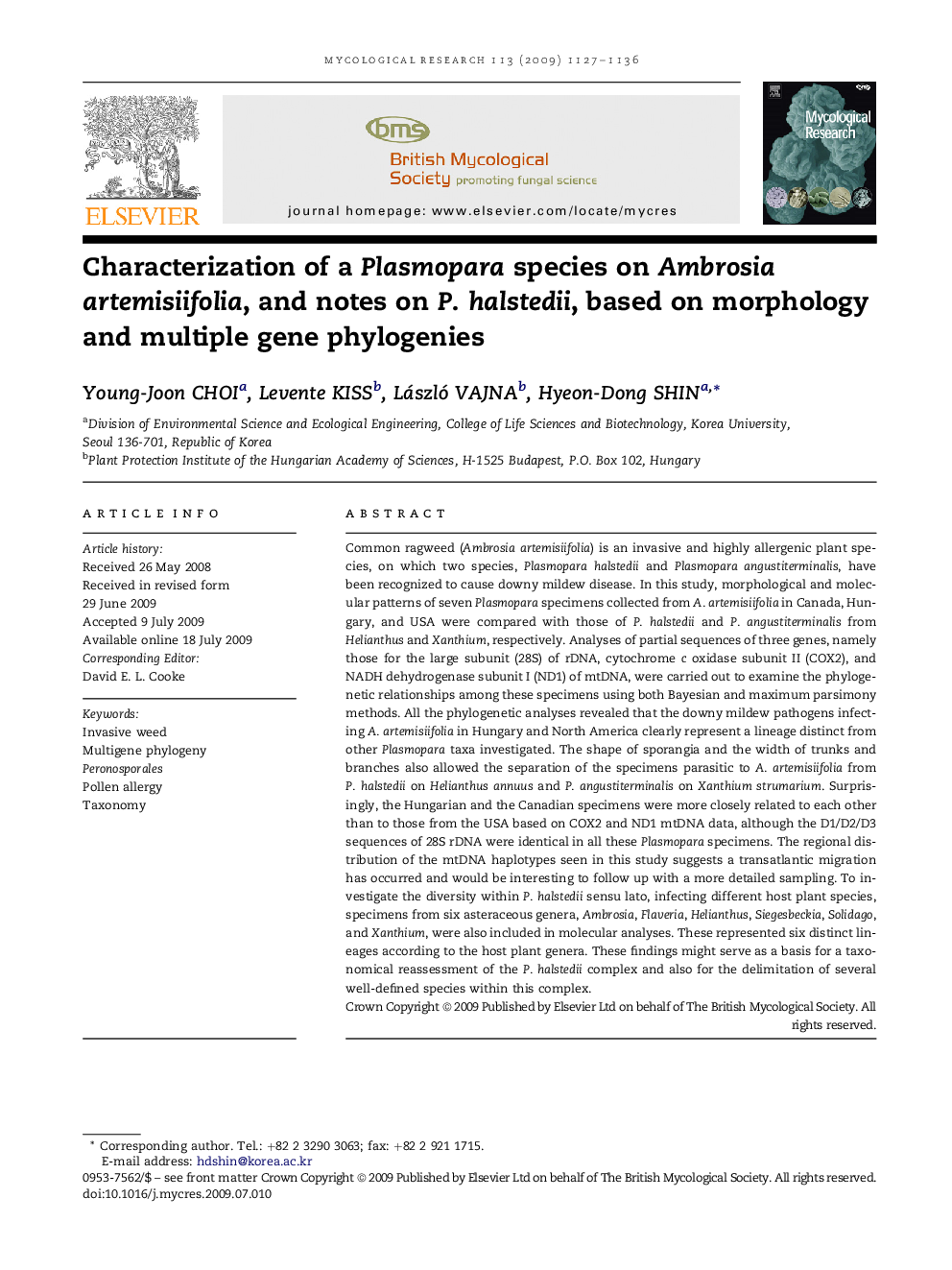| کد مقاله | کد نشریه | سال انتشار | مقاله انگلیسی | نسخه تمام متن |
|---|---|---|---|---|
| 4357514 | 1300089 | 2009 | 10 صفحه PDF | دانلود رایگان |

Common ragweed (Ambrosia artemisiifolia) is an invasive and highly allergenic plant species, on which two species, Plasmopara halstedii and Plasmopara angustiterminalis, have been recognized to cause downy mildew disease. In this study, morphological and molecular patterns of seven Plasmopara specimens collected from A. artemisiifolia in Canada, Hungary, and USA were compared with those of P. halstedii and P. angustiterminalis from Helianthus and Xanthium, respectively. Analyses of partial sequences of three genes, namely those for the large subunit (28S) of rDNA, cytochrome c oxidase subunit II (COX2), and NADH dehydrogenase subunit I (ND1) of mtDNA, were carried out to examine the phylogenetic relationships among these specimens using both Bayesian and maximum parsimony methods. All the phylogenetic analyses revealed that the downy mildew pathogens infecting A. artemisiifolia in Hungary and North America clearly represent a lineage distinct from other Plasmopara taxa investigated. The shape of sporangia and the width of trunks and branches also allowed the separation of the specimens parasitic to A. artemisiifolia from P. halstedii on Helianthus annuus and P. angustiterminalis on Xanthium strumarium. Surprisingly, the Hungarian and the Canadian specimens were more closely related to each other than to those from the USA based on COX2 and ND1 mtDNA data, although the D1/D2/D3 sequences of 28S rDNA were identical in all these Plasmopara specimens. The regional distribution of the mtDNA haplotypes seen in this study suggests a transatlantic migration has occurred and would be interesting to follow up with a more detailed sampling. To investigate the diversity within P. halstedii sensu lato, infecting different host plant species, specimens from six asteraceous genera, Ambrosia, Flaveria, Helianthus, Siegesbeckia, Solidago, and Xanthium, were also included in molecular analyses. These represented six distinct lineages according to the host plant genera. These findings might serve as a basis for a taxonomical reassessment of the P. halstedii complex and also for the delimitation of several well-defined species within this complex.
Journal: Mycological Research - Volume 113, Issue 10, October 2009, Pages 1127–1136